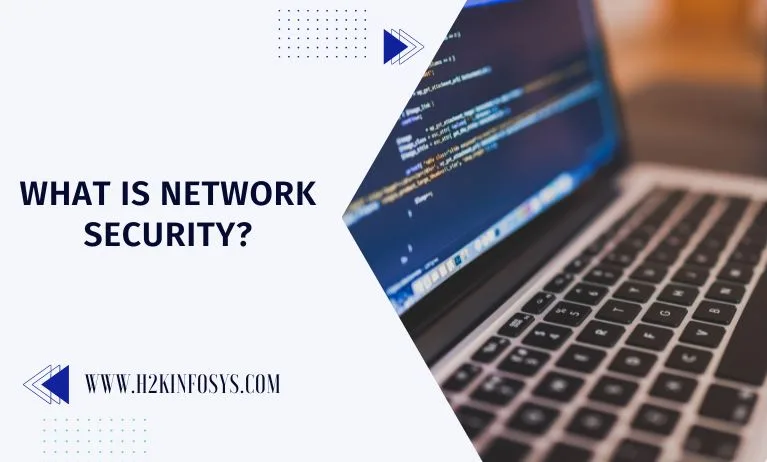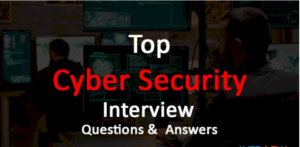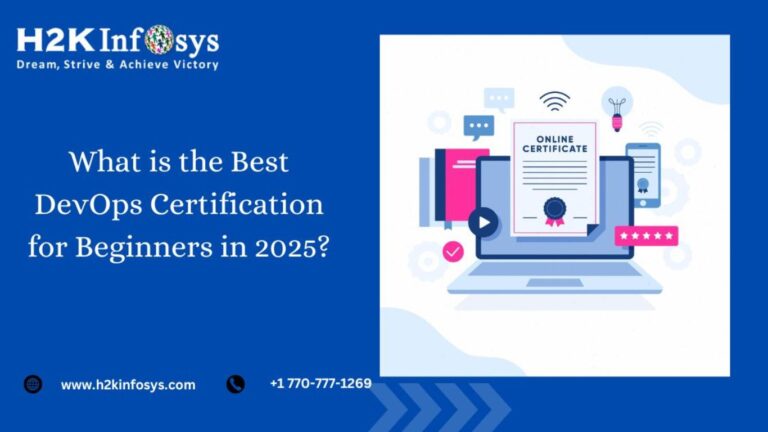What is Network Security?
Your network and data are safeguarded by network security against hacks, intrusions, and other dangers. This is a broad and all-encompassing phrase that refers to processes, regulations, and configurations pertaining to network use, accessibility, and overall threat protection, as well as hardware and software solutions. Check out the cyber security online course to learn more about Network Security.
Access control, antivirus software, application security, network analytics, various forms of network-related security (endpoint, online, wireless), firewalls, VPN encryption, and more are all included in network security.
The advantages of network security
Network security is essential for safeguarding client data and information, maintaining the security of shared data, guaranteeing dependable network performance, and protecting against online threats. An effective network security solution lowers overhead costs and protects businesses from significant losses brought on by a data breach or other security incident. Ensuring appropriate access to systems, applications, and data facilitates company operations and customer service.
Different Forms of Network Security Protection
1.Firewalls
Using pre-established security rules, firewalls manage the incoming and outgoing traffic on networks. Firewalls are an essential component of daily computing since they block malicious traffic. Firewalls, particularly Next Generation Firewalls, which concentrate on thwarting malware and application-layer attacks, are crucial to network security.
2.Network Segmentation
When assets within a group share a common function, risk, or role within an organisation, network segmentation establishes boundaries between such groups of assets. The perimeter gateway, for instance, isolates a corporate network from the Internet. The sensitive data of an organisation is kept inside the network by preventing any outside threats. Organisations can do more by defining additional internal boundaries within their network, which can provide improved security and access control.
What is Access Control?
Access control limits unauthorised access and potential dangers by defining the individuals, organisations, and devices that have access to network applications and systems. Role-based Access Control (RBAC) regulations ensure the person and device are authorised to access the asset, while integrations with Identity and Access Management (IAM) products can accurately identify the user.
3.Remote Access VPN
Telecommuters, mobile users, and extranet users can all access a workplace network remotely and securely with the use of a remote access VPN. Each host normally utilises a web-based client or has VPN client software loaded. Multi-factor authentication, endpoint compliance scanning, and encryption of all transferred data all contribute to securing the privacy and integrity of sensitive data.
4.Zero Trust Network Access (ZTNA)
According to the zero trust security paradigm, a user should only have the access and privileges necessary to carry out their assigned responsibilities. This strategy differs significantly from that offered by conventional security solutions, such as VPNs, which give a user complete access to the target network. Zero trust network access (ZTNA), often referred to as software-defined perimeter (SDP) solutions, allows users who need granular access to an organisation’s applications to do their jobs.
5.Email Security
Any procedures, items, and services aimed at keeping your email accounts and email content safe from outside dangers are referred to as email security. Although most email service providers have built-in email security mechanisms to protect you, they might not be sufficient to deter thieves from accessing your information.
6.Data Loss Prevention (DLP)
Data loss prevention (DLP) is a cybersecurity methodology that combines technology and best practices to stop the exposure of sensitive data outside of an organisation. This includes regulated data, such as personally identifiable information (PII), and compliance-related data, such as HIPAA, SOX, PCI DSS, etc., as well as data that is subject to regulation.
7.Intrusion Prevention Systems (IPS)
IPS technologies are able to recognise and stop network security assaults including brute force, DoS, and exploits of known flaws. An exploit is an assault that takes advantage of a vulnerability, such as one in a software system, to take over that system. A vulnerability is a flaw, for example. When an exploit is disclosed, there is frequently a window of time for attackers to take advantage of that weakness before the security fix is implemented. In these situations, an intrusion prevention system can be employed to effectively stop these attacks.
8.Sandboxing
Sandboxing is a cybersecurity technique that allows you to run programmes or access files on a host computer in a secure, isolated environment that closely resembles end-user operating environments. To stop threats from entering the network, sandboxing watches the opened files or programmes while it searches for dangerous behaviour. Before the files reach an unwary end user, malware, for instance, can be safely discovered and prevented in formats like PDF, Microsoft Word, Excel, and PowerPoint.
9.Hyperscale Network Security
Hyperscale refers to an architecture’s capacity to scale effectively as the system is subjected to rising demand. Rapid deployment and scaling up or down are features of this system that can adapt to shifting network security requirements. It is feasible to completely use the hardware resources offered in a clustering solution by tightly integrating networking and computation resources in a software-defined system.
10.Cloud Network Security
Applications and workloads are no longer only housed locally in a data centre on-site. Greater adaptability and innovation are needed to protect the modern data centre as application workloads move to the cloud. Network security solutions are made possible by software-defined networking (SDN) and software-defined wide area networks (SD-WAN) in private, public, hybrid, and cloud-hosted Firewall-as-a-Service (FWaaS) deployments.
Robust Network Security Will Protect Against:
- Virus: A harmful, downloadable file that can go dormant and spread itself by modifying other computer programmes with its own code is known as a virus. Once it has propagated, those files are infected and have the potential to corrupt or destroy network data as well as proliferate from computer to computer.
- Worms: Worms can slow down computer networks by consuming bandwidth and reducing the speed at which your computer processes data. A virus requires a host programme to proliferate, whereas a worm may replicate and function independently of other files.
- Trojan: A trojan is a backdoor programme that lets hostile users enter a computer system through what initially appears to be a legitimate programme but quickly turns out to be dangerous. A trojan virus can steal sensitive data, erase files, and activate additional malware that is concealed on your computer network.
- Spyware: True to its name, spyware is a computer virus that secretly collects data on a person or organisation and may share that data with a third party without the user’s knowledge or consent.
- Adware: This can lead your search requests to commercial websites while also gathering marketing information about you in order to display tailored advertisements based on your search and purchase history.
- Ransomware: This particular sort of trojan software encrypts data to render it useless and prevents access to the user’s system to steal money from the computer of the person or business on whom it is installed.
Conclusion
Network security is essential for safeguarding client information and data. It also keeps shared data secure, guards against viruses, and improves network performance by lowering overhead costs and expensive losses from data breaches. Since there will be less downtime due to malicious users or viruses, it can also help businesses save money over the long term. A good way to know more about Network Security is to learn cyber security online.





























